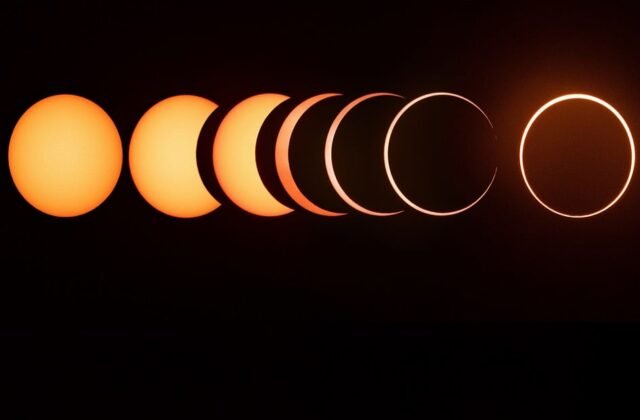
The celestial wonders never cease to amaze, and this year is no exception. On October 14th, sky gazers across North, Central, and South America will be treated to a mesmerizing display as an annular solar eclipse, often referred to as the “ring of fire,” graces the skies.
Key Highlights:
- The annular solar eclipse will be visible on October 14th.
- Best viewing locations include parts of North, Central, and South America.
- The eclipse will start at 9:13 a.m. PDT in Oregon and last be visible in Texas at 12:03 p.m. CDT.
- NASA plans to launch rockets into the eclipse’s shadow.
- A unique spectacle for those in its path, offering a rare celestial treat.
What is an Annular Eclipse?
An annular solar eclipse occurs when the Moon’s apparent is smaller than the Sun’s, blocking most of the Sun’s light and causing the Sun to look like a ring. This phenomenon gives it the popular name “ring of fire.” Unlike a total solar eclipse, where the moon completely covers the sun, an annular eclipse leaves a thin ring of the sun’s surface visible.
When and Where to Watch:
The eclipse will commence at 9:13 a.m. PDT in Oregon and will continue its journey, offering a spectacular view in Texas at 12:03 p.m. CDT. From there, it will move on to other countries, including Mexico, Guatemala, Belize, Honduras, and Nicaragua. Those residing in these regions are in for a visual treat, with the sun transforming into a radiant ring, casting unique shadows and offering a surreal experience.
NASA’s Involvement:
Adding to the excitement, NASA has plans to launch rockets into the shadow of the annular solar eclipse. This initiative aims to gather more data and insights about this celestial event, further enhancing our understanding of the sun and its interactions with the Earth.
Safety First:
While the annular eclipse promises to be a breathtaking sight, it’s essential to remember that looking directly at the sun, even during an eclipse, can cause permanent eye damage. It’s crucial to use proper solar viewing glasses or indirect methods like pinhole projectors to safely observe the event.
Summary:
The upcoming annular solar eclipse on October 14th promises to be a memorable event for those in its path across the Americas. As the moon passes between the Earth and the sun, it will create a stunning “ring of fire” in the sky. Whether you’re a seasoned astronomer or a casual sky-watcher, this celestial event is not to be missed. Remember to take necessary precautions while viewing and enjoy the rare spectacle that nature has to offer.








